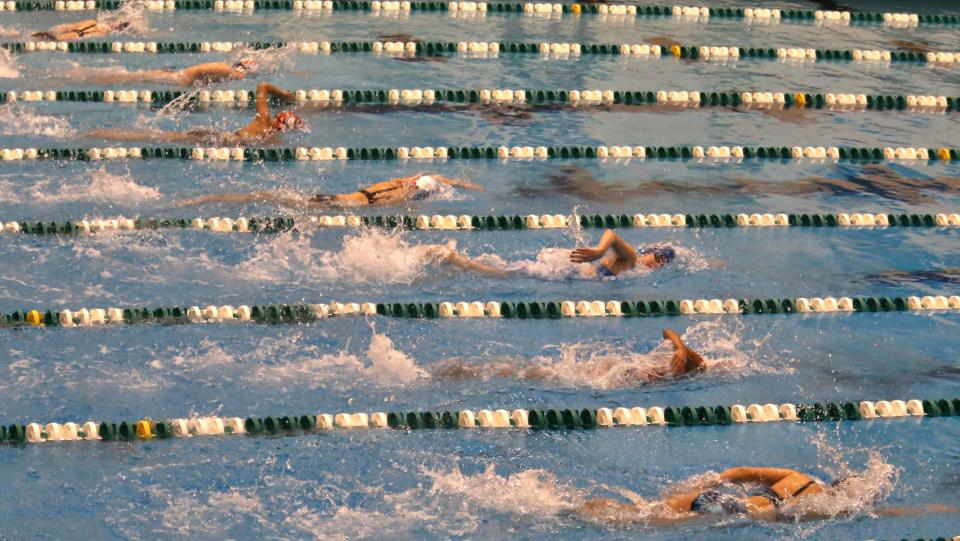Recession on its way: Here’s what it will look like in Australia

Australia hasn’t seen a recession for nearly three decades – but it is beginning to look like 2020 will be the year that breaks the 28-year dream run.
In a dramatic swing since December, when 89 per cent of experts surveyed by Finder said they did not expect a recession in 2020, a new survey has revealed that now 86 per cent do expect one to occur this year.
Just a month ago: Could coronavirus tip Australia into a recession? Here’s what 5 experts said
Just yesterday: ASX suffers worst one-day fall in history
Just last night: Idris Elba, Wall St down: What coronavirus did overnight
The impact of the Australian bushfires quickly followed by the global coronavirus crisis has derailed an already-weak economy.
But it isn’t just Australia that will be hit hard: experts are predicting an economic slowdown across the world.
“[A] global recession is on the way,” said Oxford Economics director of global macro research Ben May.
“Developments over the past week have greatly increased the likelihood that the global economy is moving into recession in response to the surge in COVID-19 cases worldwide, the associated disruption, and the aggressive market sell-off.”
Global and local stock markets have taken huge hits, with Monday 16 March alone seeing $162 billion wiped from the share market in the worst single-day fall in history.
Overnight, Wall Street lost a stunning 12.9 per cent, and while the Aussie share market shot up 2 per cent at the open this morning on Finance Minister Mathias Cormann’s news of a second stimulus package, the lift isn’t expected to linger.
What will an Australian recession look like?
AMP Capital chief economist Shane Oliver told Yahoo Finance he has been forecasting a recession since two weeks ago.
“The bushfires and the impact of coronavirus on China and hence tourism, education and commodity demand has likely knocked the economy backwards this quarter and now the global spread of the virus including into Australia with shutdowns here too will knock the June quarter backwards as well,” he said.
“There is even a risk the September quarter could be negative. So that’s a recession.”
We can also expect unemployment, which rose from 5.1 per cent to 5.3 per cent in January, to increase, with those in non-salaried jobs most at risk.
“As the economy slows down particularly in areas where people gather together (like education, hospitality, traditional retail, tourism, entertainment) it will mean a rise in unemployment at least to 6 or 7 per cent and even weaker wages,” he said.
But Oliver believes we won’t be in recession for too long.
“It will also mean lower interest rates on mortgages and lower petrol prices and ultimately stimulus payments from the government.
“Government measures will try and help keep businesses afloat through this period so we can bounce back quickly once the virus comes under control but it will be a rough ride.”
How bad will it be?
While independent economist Stephen Koukoulas said there is “no doubt” that Australia will see a “deep recession” without “extreme policy stimulus” from the federal government.
More from The Kouk: 1 million unemployed: The possible effects of coronavirus on the economy
Like Oliver, he anticipates unemployment heading to 7 per cent or higher, wages growth dropping to or below 1 per cent, and “inflation possibly turning into deflation”.
“The government can minimise the risk of this or, if the policy stimulus is big enough, it may be able to avoid this recessionary scenario,” Koukoulas told Yahoo Finance.
A ‘big enough’ stimulus package would mean one to the tune of $15 to $20 billion per quarter until the coronavirus crisis was over, he said.
“This is best done by ensuring the cash is injected into the economy to areas with a higher propensity to spend and invest. Those on social security payments, low incomes, small and medium business,” he said.
Any stimulus will have to be delivered immediately, Koukoulas said.
“With a bit of luck and some bold stimulus measures, the government could avoid the worse case scenario.”
Many Australians will lose their jobs or work fewer hours, and incomes will take a hit, Koukoulas said.
“The loss of wealth as share prices dive will not only impact sentiment but will impact retirement plans for many. It will even see business scale back their investment and hiring plans.
“This crisis will hurt consumers.”
Make your money work with Yahoo Finance’s daily newsletter. Sign up here and stay on top of the latest money, news and tech news.
Follow Yahoo Finance Australia on Facebook, Twitter, Instagram and LinkedIn.

 Yahoo Finance
Yahoo Finance 
